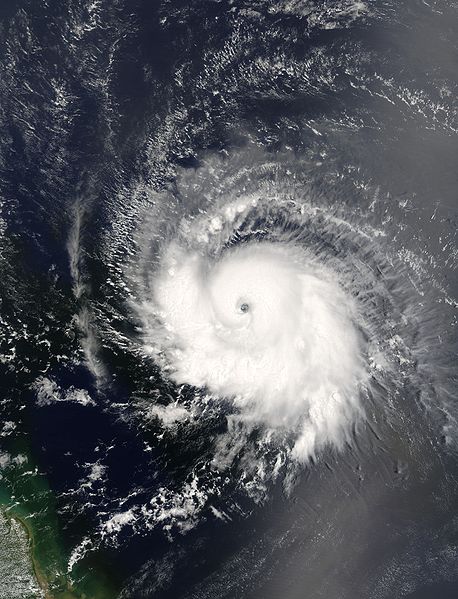
Image of Hurricane Ivan courtesy NASA
Believe it or not, some 31,000 miles of oil pipelines snake across the seafloor of the Gulf of Mexico. New research indicates these pipelines are vulnerable to hurricanes—including waves and currents that persist for up to a week after the passage of a cyclonic storm.
The new study is based on unprecedented observations of the eye of 2004’s category-4 Hurricane Ivan as it crossed the Gulf of Mexico directly above a network of sensors on the ocean floor designed to monitor continental shelf currents.
Measurements taken under that hurricane showed storm-propelled currents powerful enough to dig up the seabed down to 300 feet. Computer modelling indicates that hurricanes considerably weaker than Ivan could still tear up the seafloor to 300 feet and cause submarine landslides.
“The stress on the sea floor lasted nearly a week,” says Hemantha Wijesekera, lead author of the study out of the Naval Research Laboratory, Stennis Space Center, Mississippi. “It doesn’t go away, even after the hurricane passes. Hurricane stress is quite large, so the oil industry better pay attention.”
The paper, [pdf] “High Sea-Floor Stress Induced by Extreme Hurricane Waves” is forthcoming in the 10 June issue of Geophysical Research Letters.
(If you appreciate our BP coverage, please consider making a tax-deductible donation.)









